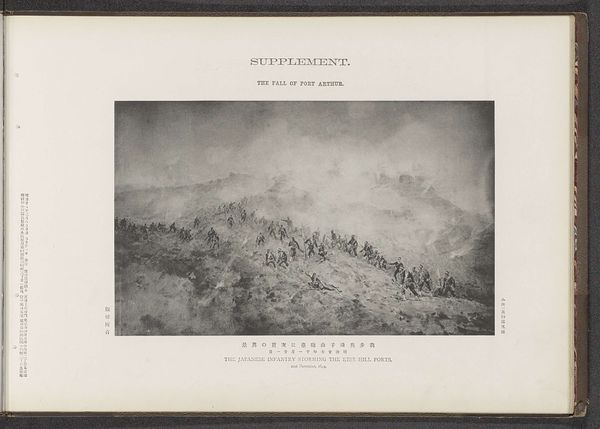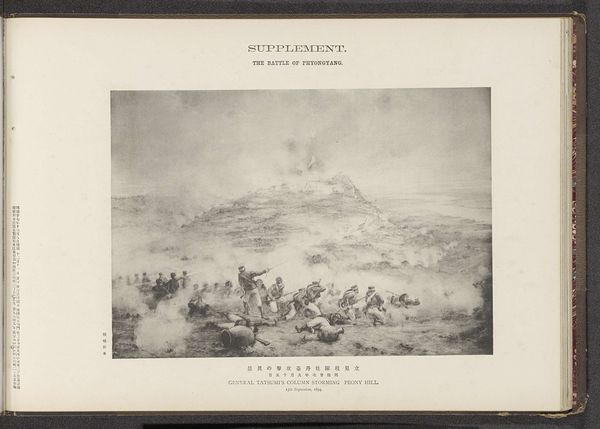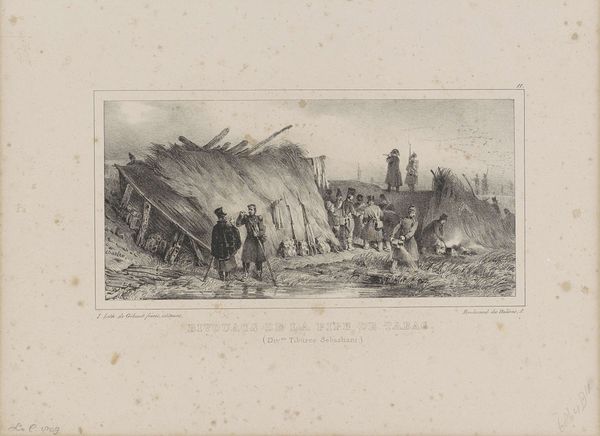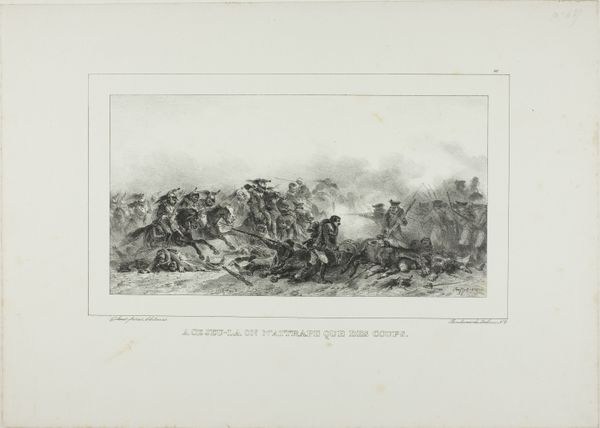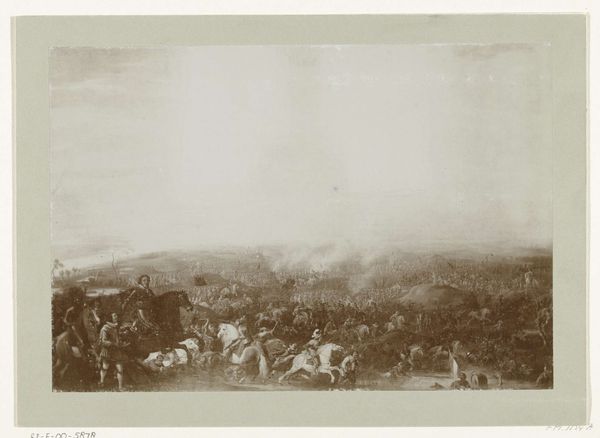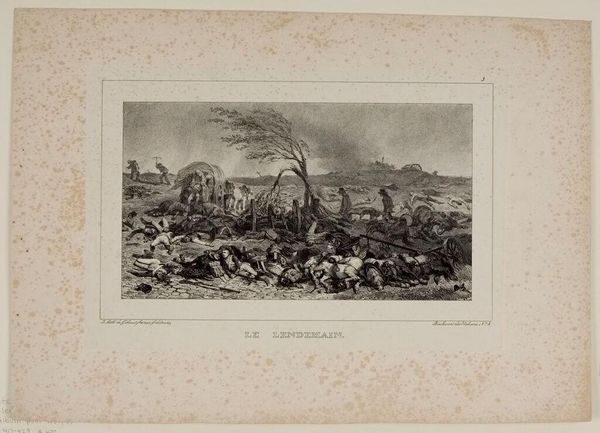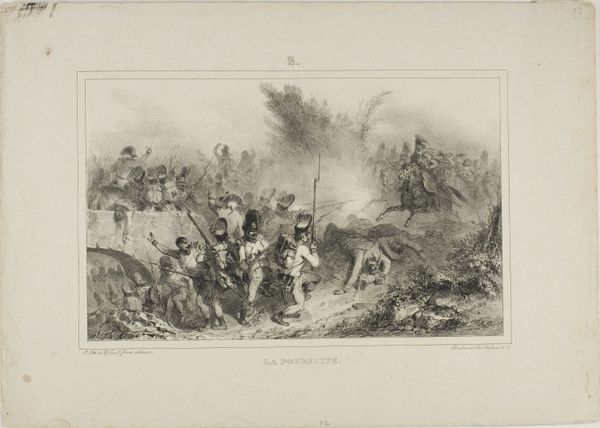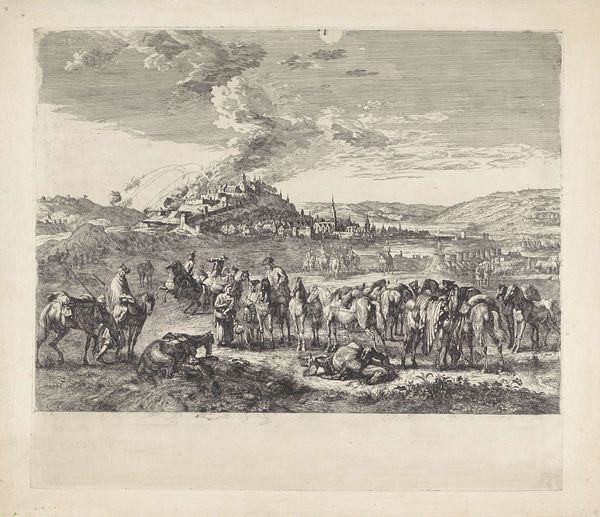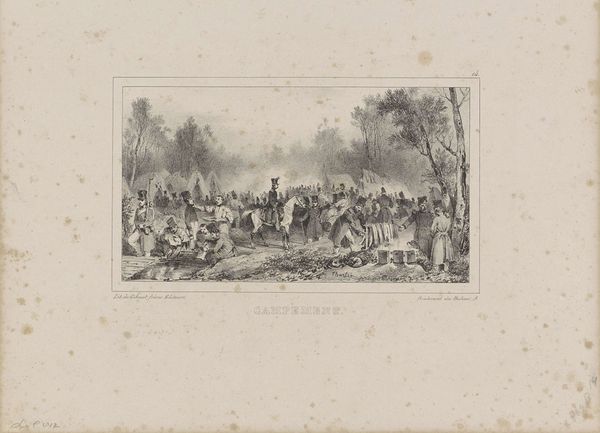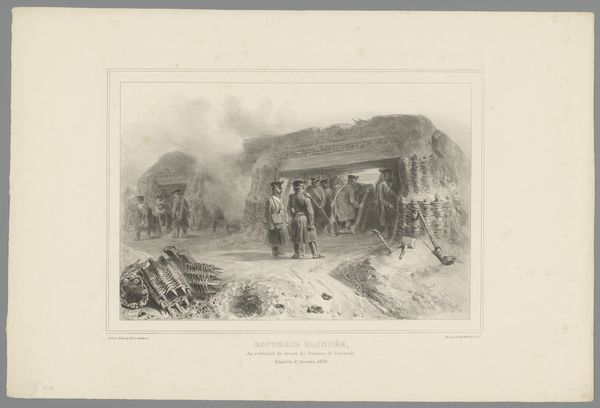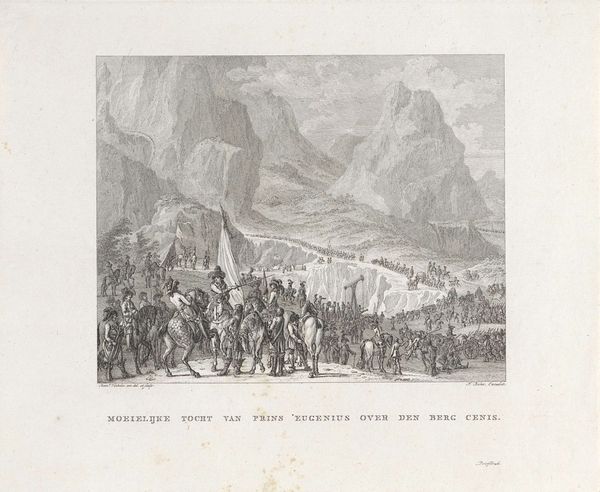
print, etching, engraving
#
narrative-art
# print
#
etching
#
landscape
#
romanticism
#
history-painting
#
engraving
#
monochrome
Dimensions: height 245 mm, width 340 mm
Copyright: Rijks Museum: Open Domain
Curator: This etching by Nicolas Toussaint Charlet, titled "In de loopgraven," or "In the Trenches," was created between 1832 and 1833. It is currently held in the Rijksmuseum collection. Editor: The monochromatic landscape really amplifies the desolation. The scale feels massive, but the cramped trench compresses the figures, evoking a sense of hopelessness. Curator: Charlet was a military enthusiast, so these historical prints were highly produced and accessible during his time. The process of etching and engraving allowed for distribution on a scale that painting never could. Editor: And consider the impact that these repeated images have on public sentiment! By circulating romanticized but still quite grim portrayals of trench warfare, the production of such images contributed to both popular conceptions and national identity during a turbulent period. Curator: Absolutely. The way he captures the soldiers huddled together really brings out the social element of war. There is a focus here not on individual heroism but rather the shared plight. Editor: It makes you wonder about the economics of printmaking at the time and how that may have affected the style and composition of Charlet's works, right? Who paid for these prints? And for what reasons? How did this piece circulate among the general public? Curator: Those are precisely the questions that matter. Considering that these prints were made and disseminated at a crucial time of European political struggle adds additional layers to its historical reading. Editor: Seeing the romantic elements, the almost theatrical display of hardship... It's striking how material conditions influenced the dissemination of romantic war images. Curator: Indeed, understanding that production allows us to look closely and ask how these images worked within a specific society. Editor: It’s unsettling to think about the multiple layers through which popular culture and historical records communicate this human conflict. Curator: Well said. I think we’ve really highlighted the ways this print both reflects and contributes to our understanding of war.
Comments
No comments
Be the first to comment and join the conversation on the ultimate creative platform.
